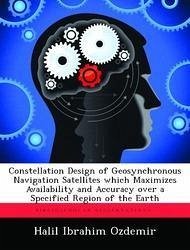Currently, there are four Global Navigation Satellite Systems (GNSS) either being developed or in existence-GPS, GLONASS, Compass, and Galileo. Additionally, there are several Regional Navigation Satellite Systems (RNSS) planned or in existence, as well as numerous augmentation systems (which require a GNSS for operation). It can be anticipated that there will be interest in developing additional independent regional navigation satellite systems to cover areas of interest to particular countries or regions, who want to have their own system. In this paper, a genetic algorithm is used in an e ort to determine near-optimal RNSS constellations. First, a cost function is setup, which involves a weighted combination of dilution of precision (DOP) values and percentage availability for any number of receiver locations on the ground (which themselves can be weighted). E ectively, using this approach it is easy to quantify the quality of coverage, in terms of measurement geometry, over a speci c region of the earth. Next, a genetic algorithm is used in order to attempt to converge to the lowest-cost constellation possible.








